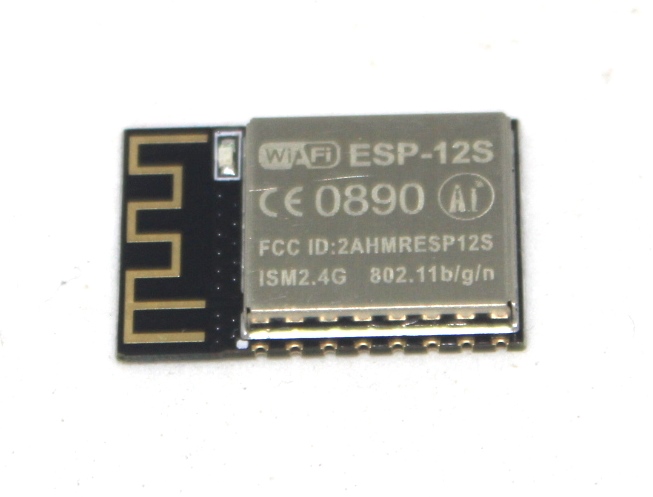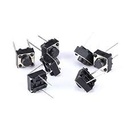ESP8266 ESP-12S Wifi module
This content will be shared across all product pages.
Description:
The ESP8266 ESP-12S WiFi Module is a versatile and widely used module for adding WiFi connectivity to various electronic projects. Based on the ESP8266 chip, this module offers a comprehensive range of features for wireless communication and is ideal for Internet of Things (IoT) applications.
Key Features:
- ESP8266 Chip: Provides robust WiFi connectivity with support for various networking protocols.
- Integrated PCB Antenna: Built-in antenna design for reliable wireless performance.
- Compact and Easy to Integrate: Designed to fit easily into small and compact spaces.
- Multiple Operating Modes: Supports Station mode, Access Point mode, and Station + Access Point mode.
- Rich I/O Options: Includes GPIO, UART, and other interfaces for versatile applications.
- Low Power Consumption: Suitable for battery-powered and energy-efficient projects.
- Chip: ESP8266
- Frequency Range: 2.4 GHz ISM band
- WiFi Standard: 802.11 b/g/n
- Flash Memory: Typically 4 MB
- Operating Voltage: 3.3V DC
- Operating Current: Low power consumption (varies with operating mode)
- Interface: UART (serial communication), GPIO
- Dimensions: 24.8 mm x 16.6 mm x 2.8 mm
- Weight: Lightweight for easy integration into various designs
- IoT Devices: Enables WiFi connectivity for smart home and industrial applications.
- Wireless Communication: Facilitates wireless data transmission between devices.
- Embedded Systems: Adds WiFi functionality to microcontroller-based projects.
- Prototyping and Development: Ideal for developing and testing wireless applications.
Technical Specifications:
- Logic Family: CMOS
- Number of Channels: 3
- Switch Configuration: Single-Pole Double-Throw (SPDT)
- Supply Voltage Range: 3V to 15V
- “ON” Resistance (R_ON): 125Ω typical at V_DD = 10V
- “OFF” Leakage Current (I_OFF): ±100pA typical at V_DD = 10V
- Control Input Voltage (V_IH): 0.7 V_DD min, 0.3 V_DD max
- Maximum Operating Frequency: 40 MHz at V_DD = 10V
Applications:
- Signal routing and switching
- Analog and digital multiplexing
- Audio and video signal processing
- Data acquisition systems
- Test equipment


